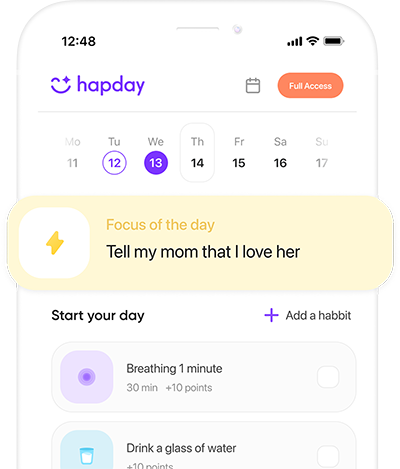Autism Spectrum Disorder (ASD) isn’t just about challenges with social interaction or communication—it often comes with a companion that is less visible but equally impactful: anxiety. For many individuals with ASD, anxiety can magnify existing difficulties and create new hurdles. Understanding this intersection is key to developing effective strategies for support. Let’s explore how anxiety manifests in ASD and the behavioral approaches that can provide relief.
Table of Contents
- The Connection Between ASD and Anxiety
- Identifying Triggers and Patterns
- Behavioral Strategies for Managing Anxiety
- Support Systems and Resources
- The Role of Medication
- Conclusion: Moving Towards an Integrated Approach
The Connection Between ASD and Anxiety
Prevalence and Impact
Anxiety affects approximately 40-50% of children and adolescents with autism, a significant contrast to the 7.1% prevalence in the general child population. This stark difference underscores how intertwined these conditions can be. Anxiety in ASD isn’t just an added burden; it can heighten sensory sensitivities, fuel social withdrawal, and complicate therapeutic interventions, underscoring the need for targeted support measures.
Why is Anxiety More Common in ASD?
Understanding why anxiety is so common in ASD involves looking at the nature of the disorder. Social and communication difficulties can make everyday interactions feel unpredictable and stressful for those with ASD. When coupled with potential sensory overload and a preference for routine, it’s easy to see why anxiety might thrive in this environment.
Manifestations of Anxiety in ASD
Anxiety doesn’t always look the same in individuals with ASD as it does in neurotypical individuals. Keep an eye out for:
- Increased Repetitive Behaviors: Sometimes a self-soothing response to anxiety.
- Avoidance: Steering clear of social situations or certain environments.
- Heightened Sensory Sensitivities: More intense reactions to sensory inputs.
- Meltdowns: Extreme responses to anxiety-inducing stimuli.
Identifying Triggers and Patterns
Recognizing the specific triggers of anxiety is the first step towards effective management. This requires keen observation and patience.
Observational Strategies
Parents, caregivers, and educators should closely monitor:
- Time of Day: Are mornings more stressful than afternoons?
- Environmental Factors: Which noise levels or lights might be overwhelming?
- Social Interactions: Who or what type of interaction seems to cause anxiety?
- Routine Changes: How do deviations impact anxiety?
Functional Behavioral Assessments
A Functional Behavioral Assessment (FBA) helps identify why certain behaviors occur, providing clarity on whether a behavior is an escape mechanism, a sensory response, or a form of communication.
Behavioral Strategies for Managing Anxiety
Armed with insights from observations, it’s time to implement strategies that address specific anxiety patterns.
Cognitive Behavioral Therapy (CBT)
Adapting CBT for individuals with ASD can effectively reduce anxiety. By using visual aids, concrete examples, and repetitive practices, CBT can become accessible and impactful. Social stories and role-playing often become valuable tools in this adaptation process.
Exposure Therapy
A gradual introduction to anxiety-provoking situations can work wonders. For someone with ASD, this might mean easing them into social gatherings or new sensory environments incrementally and supportively.
Mindfulness and Relaxation Techniques
Techniques such as deep breathing and progressive muscle relaxation aren’t just adult exercises—they can help individuals with ASD manage anxiety. Integrating these methods into daily routines helps build resilience.
Social Skills Training
Socialize without stress by practicing through:
- Role-Playing: Simulate interactions to build confidence.
- Social Stories: Use narratives to demystify social cues and expectations.
- Peer-Mediated Interventions: Let peers model positive social behaviors.
Sensory Integration Therapy
For those whose anxiety is primarily sensory-driven, sensory integration therapy can be transformative. Tools like weighted blankets and sensory swings help moderate sensory input.
Support Systems and Resources
It takes a village to support individuals with ASD. A strong network amplifying behavioral strategies can significantly enhance coping capabilities.
Family Support and Education
Family involvement is critical. Educating loved ones about ASD and anxiety enables them to provide empathetic and effective support.
Educational Support
Collaborating with schools to create accommodating environments is vital. An Individualized Education Program (IEP) with anxiety-friendly adjustments can aid in building a supportive school experience.
Teacher Training
Trained educators can make a difference by recognizing and addressing anxiety promptly, creating a stable and predictable learning environment.
Community Resources
Reach out to autism support groups or mental health services for added comfort. Sharing experiences with others in similar situations can lessen the isolation often felt.
Technology and Assistive Tools
Embrace technology’s potential. Apps that help with visual schedules or meditation exercises can seamlessly integrate into daily routines.
Examples of Useful Technology
- Calm Counter: A tool to help manage emotional responses.
- Social Stories Creator: Customize stories to tackle specific anxiety triggers.
The Role of Medication
While behavioral strategies form the foundation of anxiety management in ASD, medication can be an option for some. Any medicinal intervention should always follow a careful evaluation by healthcare professionals.
Conclusion: Moving Towards an Integrated Approach
Effectively managing anxiety in ASD means taking a comprehensive approach, intertwining behavioral strategies, robust support systems, and medication when necessary. Collaboration among caregivers, teachers, healthcare providers, and individuals with ASD themselves is crucial.
Although anxiety in ASD can create challenges, it also opens the door to opportunities for understanding and growth. Through consistent, tailored support and genuine empathy, we can help those with ASD navigate their journey, unlocking potential and paving the way for enriched lives.



I found this article incredibly insightful! It’s amazing to see how anxiety intertwines with ASD, making everyday interactions so much more challenging. The emphasis on identifying triggers really resonates with me; it’s often the little things that can cause the biggest waves of anxiety.
Honestly, I’m a bit skeptical about the effectiveness of some behavioral strategies mentioned. While they may work for some, there are many who struggle with these approaches. It would be interesting to hear more real-life examples or case studies showing their impact.
I understand your concern! However, I think sharing real-life examples can help demonstrate how different strategies can be tailored to individual needs. Every child is unique, and what works for one might not work for another.
I love the mention of technology as a tool in managing anxiety! Apps like Calm Counter sound like great resources for kids with ASD. Integrating tech into their daily routines can make a significant difference in how they cope with stress!
‘The Role of Medication’ section caught my attention. It’s a sensitive topic but an important one. I appreciate that the article emphasizes careful evaluation before starting any medication—it’s crucial to have that balance between behavioral strategies and medical support.
‘Absolutely! It’s all about finding what works best for each individual without jumping into quick fixes that might not address underlying issues.’
‘Exactly! Comprehensive care should always include input from healthcare professionals who understand ASD and its complexities.’
‘The connection between ASD and anxiety is so important to discuss! I’ve seen firsthand how anxiety can magnify behaviors in my friend’s child with autism. Learning about effective management strategies feels like empowering knowledge for all of us who care about those affected.’
This topic is so relevant! The visual aids mentioned in Cognitive Behavioral Therapy sound really useful, especially for kids who struggle to express their feelings verbally. It’s all about finding ways to communicate effectively!
Totally agree! Visual aids have been a game changer in our home, helping my son articulate his feelings when words fail him.